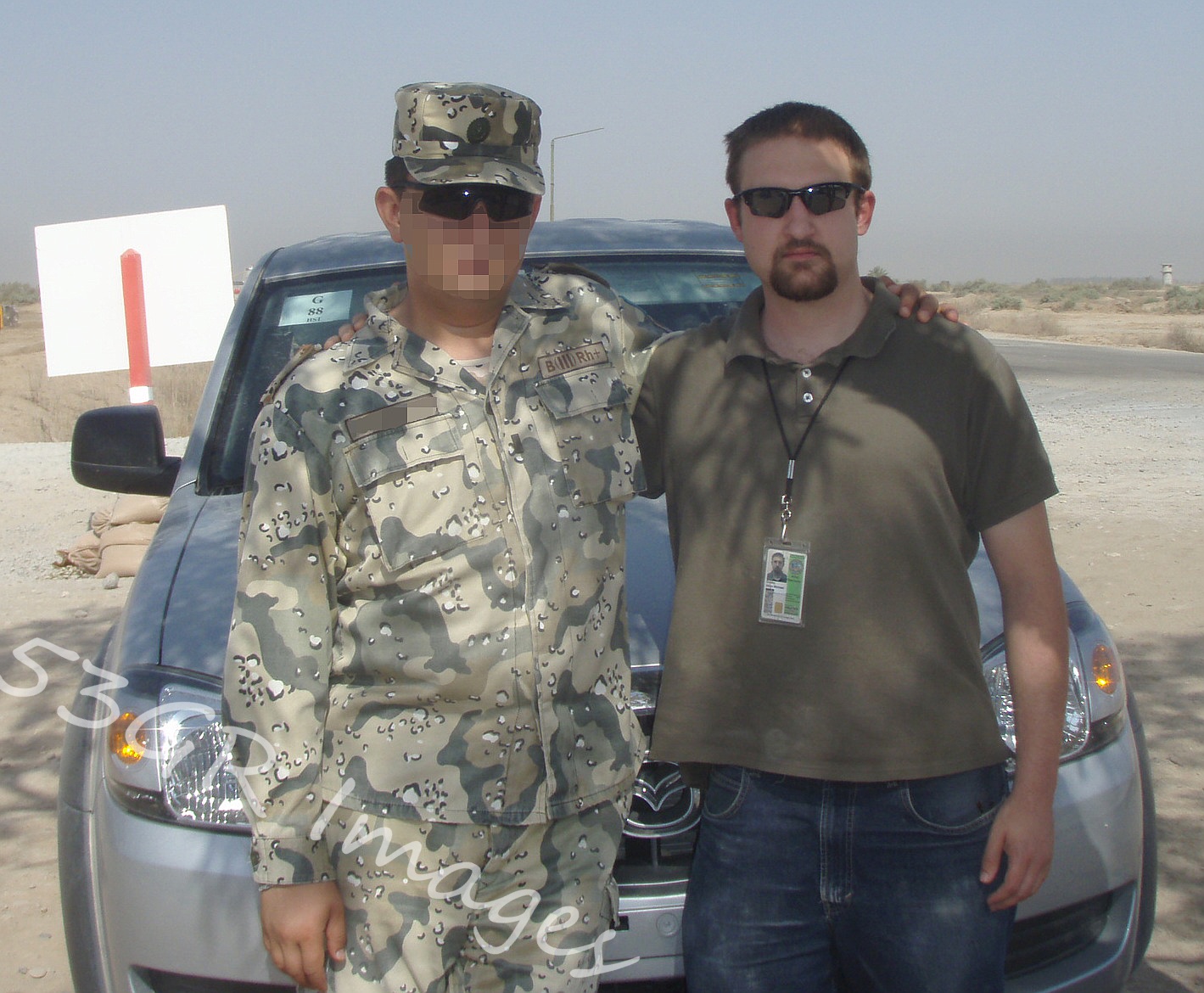I’ve seen a fair number of camouflage patterns in my travels. Of course, most were in Iraq. In late 2007, I got to see the Air Force unit I worked with transition to a ridiculous digital tiger-stripe affair called the Airman Battle Uniform. This abomination looked even worse than the US Army’s ACU, which is saying something.
In contrast, the Romanian Army’s camo (which was in fact a copy of the British pattern) seemed effective in a brown environment. The same could be said of the DCUs worn by the Georgian contingent in FOB Delta. The Kazakhstani troops there wore an interesting pseudo-desert pattern based on our 80s six-color pattern. Of course, they wore the traditional white-and-blue horizontal undershirt of the VDV.

I’ve come into possession of other camouflage patterns over the years. While in Nepal, I had ample opportunity to see both their police and Army uniforms. Their police can be diffirentiated by uniform; the traffic police wear solid blue, while the Armed Police wear a blue camouflage pattern. Though not the best, I did find the Nepali Army pattern to be rather effective, especially when viewing them training near Nagarkot.
The Iraqis used a cornucopia of different camouflage patterns. Rarely did I see a unit in which all the members wore the same pattern and often, individual soldiers donned a multiple types of camo. The only exception to this hodgepodge was the Iraqi Special Forces in Basrah, though even their officers fell prey to geardo disease.
The patterns worn by Iraqi army and police ran the gamut from practical to absurd, obsolete to tacticool. I encountered men wearing a domestic copy of the US M1948 ERDL pattern, US Woodland, Six-Color “chocolate chip” and another Chocolate Chip type pattern, this one incorporating light green. All could be seen among a group of police recruits in Wasit province.


The fact that these woodland patterns weren’t appropriate for the environment didn’t bother the Iraqis at all. In fact, they preferred their old, green camo to simple khaki jumpsuits like the ones the Ugandan guards wore. I once asked an officer why they wouldn’t go with just khaki. He responded that it didn’t look good enough.
Of course, the more well-established police in that area wore fashionable Iraqi National Police pixilated blue uniforms – which stood out in the grubby desert, but looked spiffy.
The Iraqi units in Basrah seemed to have better-organized quartermasters. The Iraqi Air Force there dressed almost exclusively in DCUs. Regular Iraqi Army units were less homogeneous. Often, officers had differing patterns (that some bought themselves). I saw a variety of types. General Abbass wore what seemed to be a desert version of the old M1948 ERDL. I recall a 2nd Lieutenant who wore a Desert Tiger Tripe uniform, quite possibly by Tru-Spec.


The Iraqi Special Forces brigade in Basrah wore a beige and brown woodland camouflage pattern produced in Lithuania. The pattern was interesting and though it didn’t blend in the desert as well as desert DPM, it was a fair sight better than ACUs. I brought a set home and gave them to a friend who’d been with me in Baghdad. He enjoyed running around the Arizona scrub with them.


When I met Staff Maj. Gen. Aziz Noor Swady, he wore what appeared to be a copy of temperate MARPAT. Later, he could be seen in British desert DPM pattern. This was no surprise, as he’d been working with the British for years in Basrah before the limeys turned the base over to us. It also illustrates that for Iraqi officers, camouflage was political, and a conveyor of status.
In fact, camo was much more of a fashion statement and status symbol than an actual practical military consideration. Having an American, British or more unique camo pattern was important because it showed how cool the wearer was. No matter that he probably couldn’t hit the broad side of a barn, was sloppy in appearance and would run at the first sign of trouble. No, he looked cool, and that’s what was important.
We firearms enthusiasts must make sure that we don’t fall prey to this way of thought. Camo is neat (just ask any seven-year-old boy) but its purpose is to conceal the wearer, not make him look cool. For the last four years, I’ve been using surplus German Flecktarn. I’ve tried other patterns, namely Swiss Alpenflage, Czech digital, US Woodland and Russian Flora. Flecktarn out-performs them in the woods of PA.
I’ll be examining some other patterns in an upcoming article series and you’ll see if Flecktarn remains king or if it loses its crown.
-By Allen Cosby
Latest posts by 53gr (see all)
- H&H Medical: H Bandage and Thin H Bandage – January 2, 2020
- S&W M&P M2.0 Series – January 9, 2017
- SIG Sauer P938 – October 19, 2016

Leave a Reply